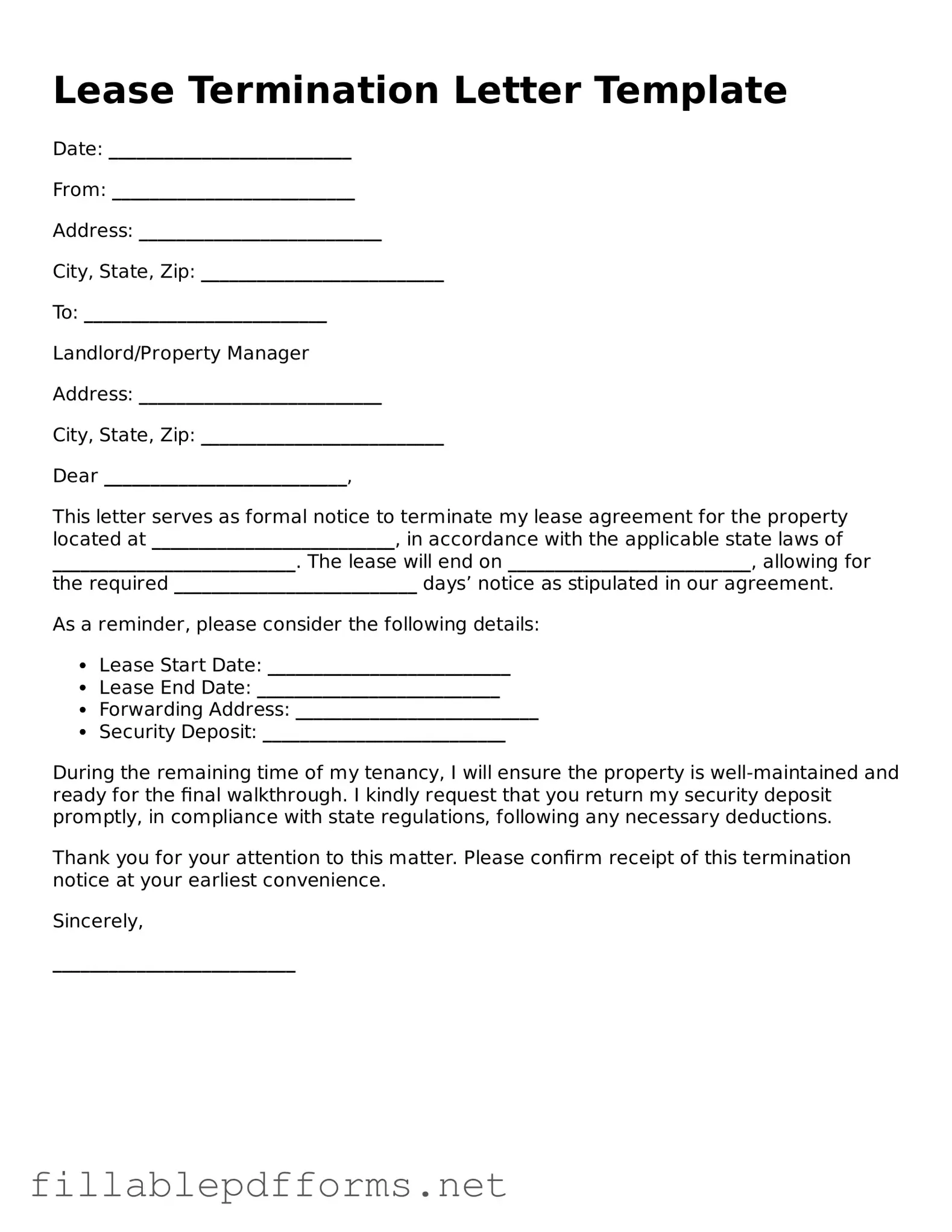When a tenant or landlord decides to end a lease agreement, a Lease Termination Letter becomes an essential document in the process. This letter serves as a formal notification that one party intends to terminate the lease, providing clarity and structure to what can often be a complex situation. It typically includes key details such as the names of the parties involved, the property address, and the specific date on which the lease will terminate. Additionally, the letter may outline any obligations that remain, such as the return of security deposits or the condition in which the property should be left. By clearly stating the intent to terminate, this letter helps prevent misunderstandings and potential disputes, ensuring that both parties are on the same page. Understanding the components and importance of a Lease Termination Letter can facilitate a smoother transition, whether moving out of a rental property or preparing for new tenants to move in.
